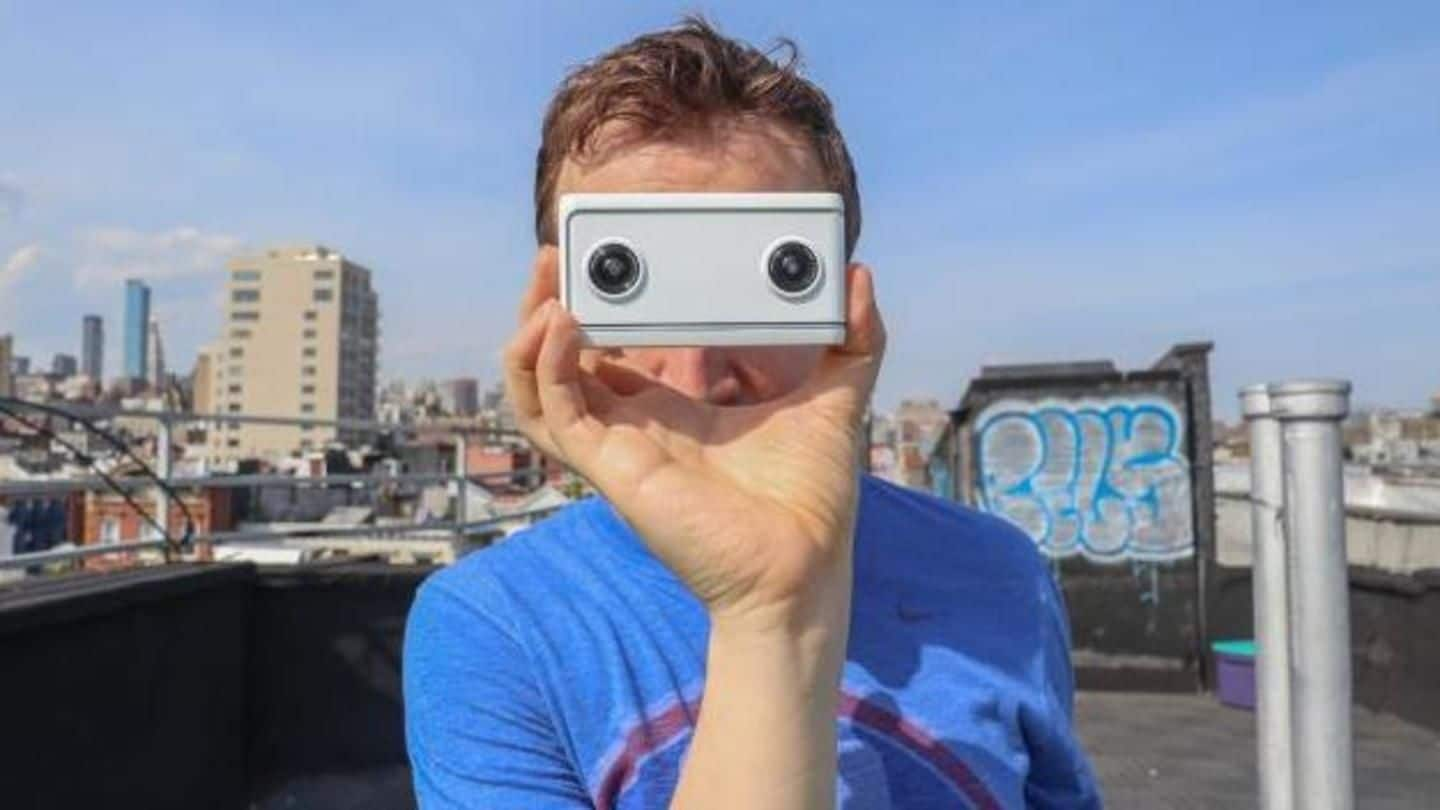
Lenovo Mirage is world's first 180-degree VR 3D camera
What's the story
Lenovo has launched a 3D camera called Mirage Camera for $299. It is the first camera that is based on Google's VR180 technology, which is a VR format that records videos in 180 degrees instead of 360 degrees while still being 4K in resolution. The camera is aimed towards YouTube creators and is smartly timed with the Lenovo Mirage Solo VR headset's release ($399).
Details
Capture 3D videos in 180 degrees instead of 360 degrees
The camera comes with YouTube VR180 integration, which is a platform supporting VR180 tech. It makes capturing VR live-action content easier by shooting half as much but still delivering super wide, 3D 4K videos. The camera will also take 3D photos in 180 degrees. It can be connected to Google's VR180 app to preview shots, apply five different filters, and directly launch YouTube Live.
Features
Two 13MP lenses, removable battery, compact design
The Lenovo Mirage Camera features a pair of 13MP fisheye lenses. The life of its 2,200mAh battery is short at two hours, but it is removable, can be swapped with a complimentary spare, and is rechargeable via USB-C. The camera sports 16GB of internal storage which can be extended up to 128GB via a hidden microSD card slot. It has a compact, pocketable design.
Drawbacks
There's no native time-lapse video option on the camera
The camera doesn't have a viewfinder screen on the back, which means you can't frame your shot. Lenovo didn't consider this utility since the super-wide aspect ratio of the camera ensures that everything is captured. Also, it's easier to get lost in 180-degree videos since you can still pan 360 degrees with half of it being completely black.
Information
Lenovo Mirage Camera's file sizes are extremely small
The camera outputs extremely small file sizes at 3MB-4MB for photos and 66MB for 30-second videos. This allows them to be used and shared as is in any medium without first having to compress them. This is a huge problem in high-end 360-degree cameras.